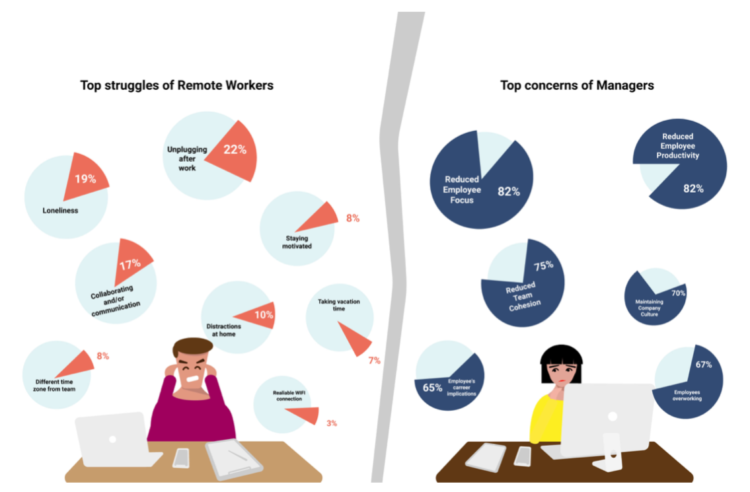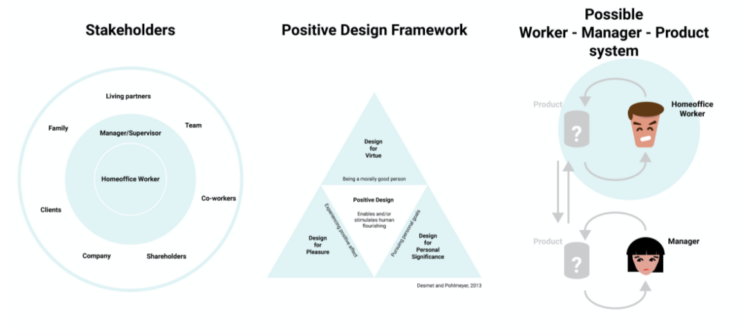Digital Assistant for a balanced Home Office Work Environment
Nov 2020 - ongoing
Jim will research the context and domain of the home office environment from a home office worker’s perspective as well as from a manager’s perspective. The Design will focus on resolving the two stakeholder’s difficulties and pain points caused by remote working in order to motivate a healthy and balanced work environment.
The number of people working from home (partially or fully) has been on the rise for years now, but the current coronavirus pandemic has accelerated this trend. Consequently, screen-time has been rising (for work – and leisure purposes), increasing the usage of digital tools to schedule, communicate and collaborate.
Context: Home Office
The sudden necessity to work from home due to the global pandemic has shown new challenges stemming from being forced to merge the private space of our home with work. According to recent studies by IWG (International Workplace Group), HIRED (hired.com), and the World Economic Forum (WEF), the top issue faced by remote workers was “unplugging” from work. Without the change of location and predefined office hours, many had difficulties dividing professional and private time.
“I’m concerned that my manager doesn’t see the full extent of my contributions when we are not together in the office which will slow down my career trajectory”
Another struggle turned out to be a lack of person-to-person communication with colleagues and supervisors. One-third of the people surveyed by the WEF were concerned that the full extent of their professional efforts wouldn’t be appreciated due to lack of in-office contact and proximity to their peers and supervisors.
On the other side, according to reports from the BBC and Biospace, managers are concerned about “keeping the spirits up” and providing the same level of leadership for their employees remotely as they could in the office.
Managers surveyed by the world economic forum were mostly concerned about reduced employee focus and -productivity followed by declining team cohesion, maintaining company culture and overworking.

